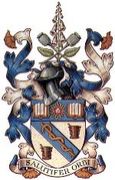かなり時間が空いてしまってすいません(汗)
実験が詰め込まれすぎで、更新できませんでしたm(__)m
さて、二学期の期末試験の問題を記録として残しておきます☆長いので、何回かに分けます☆
テストは3日間行われ、初日はスペシャルモジュール。4科目のうち、専門の2科目を回答。1時間半。
二日目はエッセイテスト。2問のうち一問回答。2時間で、自分なりの結論も導くこと。
3日目は1学期と2学期を通してのまとめから、6問出題で2問回答。
Firstday, Thursday 26th April 2007
○Anticancer Drug Development
1. Discuss the various modes of action of DNA-interactive chemotherapeutic agents providing details as to how the different families interact with the helix at the molecular level. Provide specific examples of drugs or experimental agents in each family with examples of chemical structures where appropriate. Finally, describe and comment on the rationale behind new research into wequence-selective DNA-interactive agents.
2. Discuss the principles hebind the design and development of the major class of anticancer agents known as the kinase inhibitors. Provide specific examples of drugs in each family with examples of chemical structures where appropriate. Explain why there is doubt whether any present or future kinase inhibitors will exceed the single-agent efficacy of Imatinib(Glivec). Briefly describe other signalling pathways that are presently regarded as anticancer drug atargets by the pharmaceutical industry.
○New Drug Targets in the CNS
3. The generation of animal models of disease is particularly important for the drug discovery process for the treatment of diseases of the central nervous system. Describe in detail two examples where animal models have made, or are continuing to make, a contribution to drug discovery for CNS disorders.
4. Many drugs used in the teratment of CNS disorders target synaptic transmission. Describe in detail the molecular components of synaptic transmission. Provide at least two examples of drugs currently on the market that act at synapses describing the mode of action for each. Comment on the future prospects for novel drug development directed against synaptic proteins.
○Genomics and Proteomics in Drug DIscovery and Development
5. Given that the sequence of the human genome is now available, explain how linkage analysis and the use of different types of DNA markers can be used to look for genes whose polymorphism predispose to a disease such as type 1 diabetes mellitus.
6. Drug X is in early stages of preclinical trials; however there are concerns that the drug may have induced cardiotoxic effects and therefore blood samples were obtained from both control and treated rats. Describe and compare how both two-dimensional gel electrophoresis and isotope coded affinity tagging could be used to identify any protein differences in the rat blood samples due to cardiotoxicity.
○Natural Products and Medicinal Plants in Drug Discovery
7. (Given a NMR spectrum)
What type of armatic coupling pattern is depicted above?
What does the 13C experiment DEPT135 show?
Define the CSOY and NOESY and distinguish the two experiments.
What are the differences between HMQC and HMBC spectra?
How can HMBC spectra be used to piece fragments together to give a full structure?
8. One of the most recent examples of a successful introduction of a natural product into the pharmaceutical market has been galanthamine. Briefly discuss the development of this drug from initial phytopharmacological studies to the compound's clinical development into an Alzheimer medicine. Analyse the implications for natural products related drug discovery programmes.
全部英語ですいません。
質問等ありましたらいつでも伺います☆
でわ、次回は2日目と3日目をUPする予定です(^^ゞ
実験が詰め込まれすぎで、更新できませんでしたm(__)m
さて、二学期の期末試験の問題を記録として残しておきます☆長いので、何回かに分けます☆
テストは3日間行われ、初日はスペシャルモジュール。4科目のうち、専門の2科目を回答。1時間半。
二日目はエッセイテスト。2問のうち一問回答。2時間で、自分なりの結論も導くこと。
3日目は1学期と2学期を通してのまとめから、6問出題で2問回答。
Firstday, Thursday 26th April 2007
○Anticancer Drug Development
1. Discuss the various modes of action of DNA-interactive chemotherapeutic agents providing details as to how the different families interact with the helix at the molecular level. Provide specific examples of drugs or experimental agents in each family with examples of chemical structures where appropriate. Finally, describe and comment on the rationale behind new research into wequence-selective DNA-interactive agents.
2. Discuss the principles hebind the design and development of the major class of anticancer agents known as the kinase inhibitors. Provide specific examples of drugs in each family with examples of chemical structures where appropriate. Explain why there is doubt whether any present or future kinase inhibitors will exceed the single-agent efficacy of Imatinib(Glivec). Briefly describe other signalling pathways that are presently regarded as anticancer drug atargets by the pharmaceutical industry.
○New Drug Targets in the CNS
3. The generation of animal models of disease is particularly important for the drug discovery process for the treatment of diseases of the central nervous system. Describe in detail two examples where animal models have made, or are continuing to make, a contribution to drug discovery for CNS disorders.
4. Many drugs used in the teratment of CNS disorders target synaptic transmission. Describe in detail the molecular components of synaptic transmission. Provide at least two examples of drugs currently on the market that act at synapses describing the mode of action for each. Comment on the future prospects for novel drug development directed against synaptic proteins.
○Genomics and Proteomics in Drug DIscovery and Development
5. Given that the sequence of the human genome is now available, explain how linkage analysis and the use of different types of DNA markers can be used to look for genes whose polymorphism predispose to a disease such as type 1 diabetes mellitus.
6. Drug X is in early stages of preclinical trials; however there are concerns that the drug may have induced cardiotoxic effects and therefore blood samples were obtained from both control and treated rats. Describe and compare how both two-dimensional gel electrophoresis and isotope coded affinity tagging could be used to identify any protein differences in the rat blood samples due to cardiotoxicity.
○Natural Products and Medicinal Plants in Drug Discovery
7. (Given a NMR spectrum)
What type of armatic coupling pattern is depicted above?
What does the 13C experiment DEPT135 show?
Define the CSOY and NOESY and distinguish the two experiments.
What are the differences between HMQC and HMBC spectra?
How can HMBC spectra be used to piece fragments together to give a full structure?
8. One of the most recent examples of a successful introduction of a natural product into the pharmaceutical market has been galanthamine. Briefly discuss the development of this drug from initial phytopharmacological studies to the compound's clinical development into an Alzheimer medicine. Analyse the implications for natural products related drug discovery programmes.
全部英語ですいません。
質問等ありましたらいつでも伺います☆
でわ、次回は2日目と3日目をUPする予定です(^^ゞ
|
|
|
|
|
|
|
|
School of Pharmacy London Uni 更新情報
-
最新のイベント
-
まだ何もありません
-
-
最新のアンケート
-
まだ何もありません
-
School of Pharmacy London Uniのメンバーはこんなコミュニティにも参加しています
人気コミュニティランキング
- 1位
- 広島東洋カープ
- 55348人
- 2位
- お洒落な女の子が好き
- 90004人
- 3位
- 酒好き
- 170654人
























